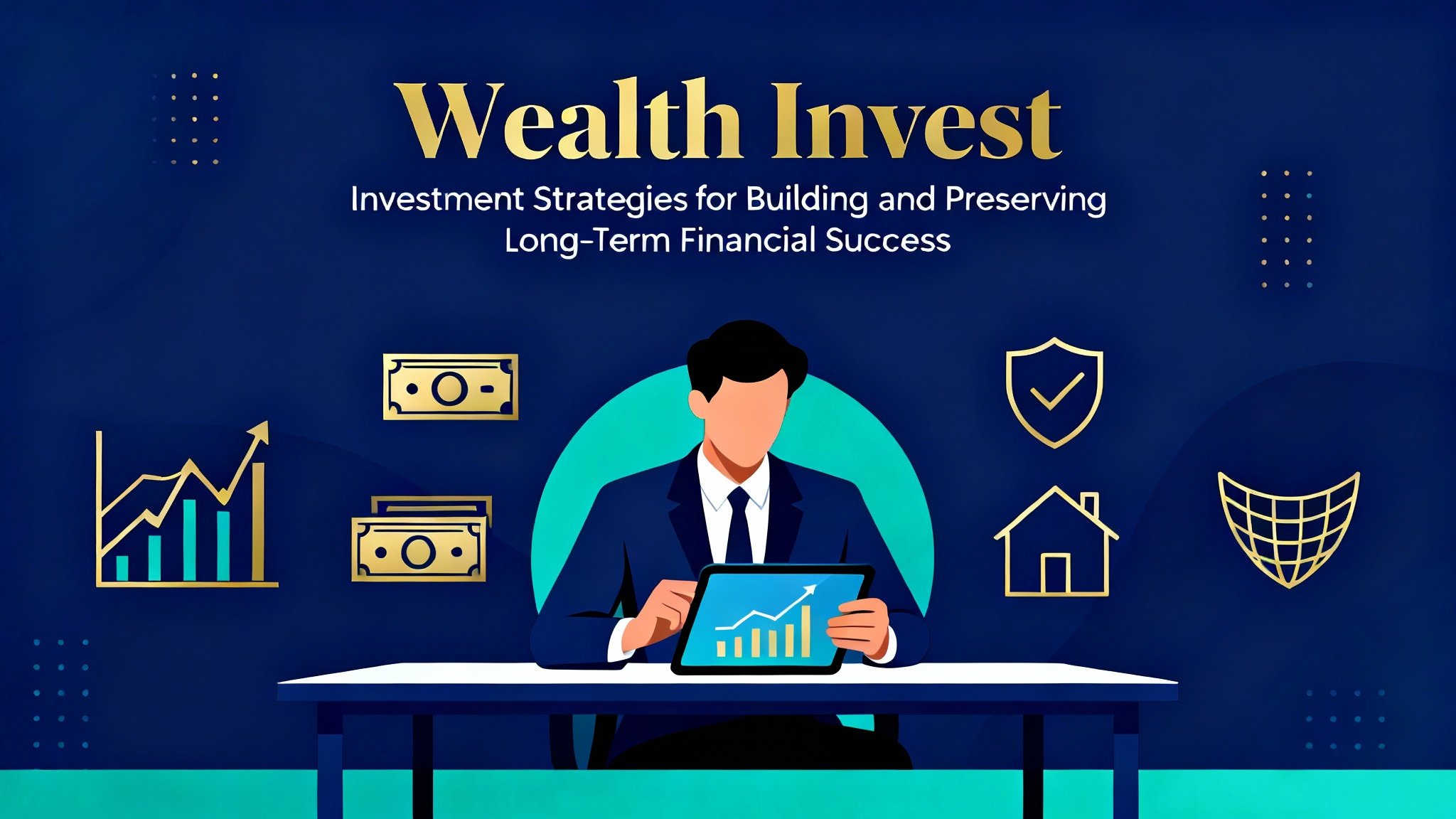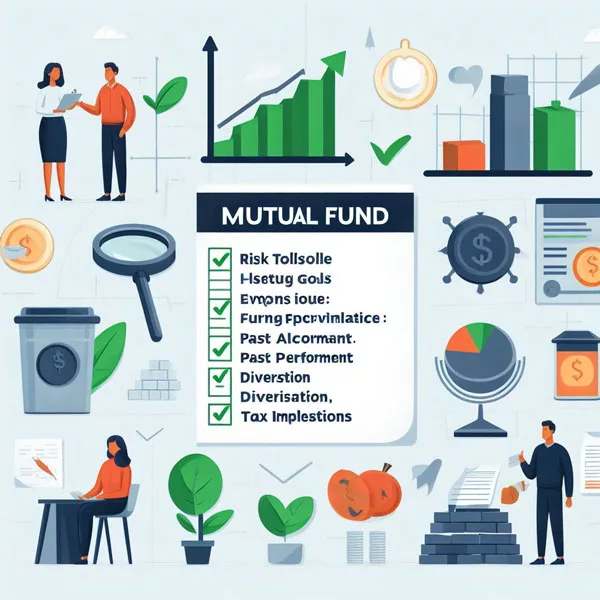Wealth Invest: Investment Strategies for Building and Preserving Long-Term Financial Success
Discover proven wealth invest strategies to grow, protect your money over time and learn how to build lasting financial security with smart, practical approaches that work for you.
Key Takeaways
When it comes to building wealth, the old “stuff your cash under the mattress” strategy just doesn’t cut it anymore. (Unless you enjoy inflation quietly nibbling away at your money like a raccoon in the night—then by all means, proceed.) Real wealth investing is about long-term growth, protecting what you’ve got, and spreading your bets across different types of investments. Translation: don’t put all your eggs—or dollars—in one basket.
That’s where wealth management comes in. Think of it like hiring a GPS for your money. Sure, you could just wing it, but a professional guide can help you dodge potholes, find shortcuts, and keep you from driving straight into a financial ditch. Of course, unlike Google Maps, they don’t yell “recalculating” when you blow $400 on impulse Amazon buys…but they do help you build a real plan.
These days, investing isn’t just about the usual suspects like stocks, bonds, or real estate. We’ve got digital currencies shaking things up and a whole movement around sustainable investing (yes, you can make money while saving the planet—your inner 12-year-old eco-warrior is cheering). According to a 2023 report from Morningstar, funds that focus on environmental, social, and governance (ESG) factors have been pulling in record investment dollars. Turns out “doing good” is also “doing well.” Who knew?
But here’s the not-so-sexy truth: building wealth takes consistency. It’s not about making one lucky bet—it’s about paying attention to the market, planning for retirement like it will actually happen one day, and being flexible when the economy decides to throw us all a curveball (again). Basically, you’ve got to stay awake at the wheel.
Of course, part of wealth management is the daily tug-of-war between “I deserve this fancy latte” and “I should probably not be 83 years old still working at Starbucks.” A solid plan helps you balance those competing needs—enjoying life today without wrecking your future self’s retirement party.
And yes, working with a certified financial advisor can make a huge difference. They’re legally required to put your interests first—which in the financial world is both rare and refreshing. Plus, they can open doors to investment opportunities that aren’t usually available to the average person scrolling through Reddit stock forums at midnight.
At the end of the day, wealth isn’t just about numbers—it’s about peace of mind. It’s knowing that you’re not just reacting to the market, but actually steering your financial life with some purpose. And honestly? That feels way better than sleeping on a lumpy mattress full of twenties.
Look, building substantial wealth requires more than just saving money in a bank account. I mean, that’s cute and all, but you’re basically losing money to inflation while the bank uses your cash to make actual returns. Strategic wealth invest approaches combine sophisticated portfolio management with comprehensive financial planning to create lasting prosperity for current and future generations.
This comprehensive guide will explore the essential components of modern wealth investment strategies, from fundamental concepts to advanced techniques used by financial professionals. Whether yo u’re beginning your wealth-building journey or looking to optimize existing portfolios, understanding these strategies can help you make informed financial decisions that align with your long-term goals.
Understanding Wealth Investment Fundamentals
Here’s where things get interesting. Wealth investing isn’t just “buy some stocks and hope for the best.” It’s a bigger, long-term game that goes way beyond timing the market or bragging about your one lucky Tesla trade at a dinner party. Think of it as the orchestra conductor of finance—making sure every instrument (taxes, estate planning, risk, returns) plays in harmony.
Instead of just picking stocks, wealth investing is about building a portfolio that works across multiple fronts: growth, protection, and efficiency. The menu is wide—everything from safe-and-steady bonds to high-volatility plays like real estate, private equity, or the occasional speculative moonshot. Basically, it’s a financial buffet, minus the questionable crab legs.
At its core, wealth investing rests on three big ideas:
- Capital preservation – protecting your money from inflation and volatility. Because nobody wants their nest egg melting faster than an ice cream cone in July.
- Growth acceleration – actually growing wealth over time, typically aiming for 7–10% annual returns with a well-diversified portfolio.
- Risk mitigation – protecting against big losses while still leaving room for growth. Bonds, for example, aren’t exactly thrilling, but they’re the dependable friend who always shows up when you need them.
And here’s the kicker: the numbers back this up. Between 2020 and 2024—aka the economic rollercoaster years—diversified portfolios (stocks, bonds, alternatives) still delivered an average of 8.2% annually. That’s miles better than your savings account, which pays about enough to cover a pack of gum. Even during the chaos of 2022, well-constructed portfolios softened the blow and bounced back stronger. Throw in commodities, which don’t always move with stocks and bonds, and you’ve got yourself a financial safety net.
Of course, there’s an elephant in the room: the price of admission. Most wealth management firms set minimum thresholds between $100,000 and $10 million. Entry-level “starter packs” (around $250K–$500K) give you the basics—asset allocation, financial planning tools—while the premium “family office” setups (north of $5 million) open the door to alternative investments and concierge-level service. It’s like the VIP section of investing: sure, there’s a cover charge, but you get perks.
And then there are the taxes. Ignore them, and they’ll happily eat your returns for breakfast. Smart wealth strategies use things like tax-loss harvesting, timing capital gains, and structured portfolios to keep Uncle Sam from grabbing more than his fair share. For high-net-worth investors, these tweaks can improve after-tax returns by 1–3% a year. Doesn’t sound huge? Compound that over 20 years, and you’re talking real yacht money.
Last but not least: fees. Whether it’s mutual funds or ETFs, you’re paying someone to manage the pool. Factor those in, because while death and taxes are inevitable, management fees are right there in the “life’s certainties” bucket too.
Bottom line? Wealth investing isn’t just about being rich—it’s about keeping wealth working smarter, not harder. And unlike a savings account, it won’t leave you wondering why your money buys less every year.
Strategic Asset Allocation for Wealth Building
Buckle up, because this is where we get into the good stuff. Asset allocation isn’t just finance jargon—it’s the cornerstone of successful wealth strategies. In fact, research shows it drives about 90% of portfolio performance over time. Yep, 90%. Not your lucky stock pick. Not that one time you sold before a crash and felt like Nostradamus. The real magic comes from how you spread your money across different buckets.

Enter modern portfolio theory, which basically says: don’t put all your eggs—or dollars—into the same basket, because baskets break. By mixing assets that don’t move in lockstep (stocks, bonds, mutual funds, ETFs, etc.), you can lower overall risk and smooth out the ride.
And diversification doesn’t just mean “own some different stocks.” It’s also about geography. A portfolio stuffed with only U.S. companies is like eating only cheeseburgers—delicious, sure, but eventually you’ll feel the downside. Adding exposure to international markets helps protect against regional downturns and currency swings.
Then there’s sector allocation—spreading money across industries so your future doesn’t hinge on a single trend. Think of it like building your fantasy football lineup (except the stakes are higher than bragging rights). Tech and healthcare? They’re the marathon runners, often carrying long-term growth. Energy and consumer goods? They’re your inflation-fighting, dividend-paying workhorses. Financials? They tend to rise with economic growth, like the friend who always shows up when times are good.
The trick is finding the right balance for your personal goals and risk tolerance. That’s where rebalancing comes in. Most advisors suggest quarterly check-ins and at least one major adjustment per year. And while it’s tempting to tinker constantly, over-trading usually just burns money on fees and taxes—like paying for VIP concert tickets only to stand in the nosebleeds.
Bottom line: asset allocation isn’t the flashy part of investing, but it’s the part that actually works. It’s less about guessing “what’s hot” and more about building a portfolio that can hold its own through bull runs, bear markets, and everything in between.
Traditional Investment Vehicles
Let’s start with the old reliables. Blue-chip stocks and dividend growth investing are like the comfort food of wealth portfolios—steady, predictable, and surprisingly satisfying over time. Companies that consistently grow their dividends usually have solid business models and smart management, which makes them the reliable friends you actually want around for the long haul. In most balanced portfolios, they make up 25–40%, delivering cash flow that shows up whether the market’s on a hot streak or throwing a tantrum.
Next up: bonds. Specifically, laddering strategies. Instead of buying one big bond and sitting around twiddling your thumbs until it matures, you spread purchases across different maturity dates. That way, when one bond pays out, you reinvest at the current rate. It’s like having multiple timers going off at different points—predictable income without betting everything on one clock.
Now, if you want real estate exposure without the drama of late-night tenant calls about broken plumbing, meet REITs (Real Estate Investment Trusts). They typically dish out 4–6% annual yields plus the chance for price appreciation. Even better, REITs often shine during inflation, since property values and rents tend to rise with prices. Most diversified portfolios keep 5–15% in REITs across different property types and regions—think of it as owning real estate without the Home Depot runs.
And of course, we can’t skip mutual funds and ETFs. Here’s the deal: low-cost index funds often beat fancy, actively managed funds over the long term, especially in efficient markets where trying to “outsmart” the market is like trying to outwit gravity. But there are exceptions—specialized sectors or international plays sometimes benefit from a skilled manager who actually knows what they’re doing (refreshing, right?). Just don’t ignore fees, because nothing eats into your returns faster than a manager who charges champagne prices for soda water performance.
Alternative Investment Opportunities
Now we’re getting into the good China cabinet of investing—the stuff that feels exclusive and a little intimidating.
Private equity and venture capital? Yep, they can supercharge returns. We’re talking 15–25% annual targets. But here’s the catch: your money gets locked away for years, like a time capsule you can’t open until someone else says so. Could be treasure, could be fool’s gold. Either way, most of these deals come with steep entry fees—think $250,000+—because apparently not just anyone gets to play in this sandbox.
Then there are commodities. Precious metals, energy futures, even agricultural products. Gold and silver tend to hold their ground during inflation (they’ve been humanity’s financial security blanket for centuries), while energy commodities rise and fall with global growth. A little messy? Sure. But also a handy hedge when everything else feels shaky.
And for those with deep pockets and niche expertise, there’s the world of art, collectibles, and luxury assets. Think Picassos, vintage cars, rare wines. They can appreciate like crazy—but they also come with… quirks. You need to know authentication, storage, and market dynamics, plus an insurance policy that won’t laugh at you when you say, “My Monet got water damage.” It’s not exactly beginner-friendly, but for some investors, it’s a glamorous (and lucrative) layer of diversification.
Retirement and Long-Term Wealth Planning

Let’s talk about the elephant in the room—or maybe the surfboard on the horizon: retirement planning. This isn’t just another line item in your financial plan; it’s the big kahuna of wealth strategies. Done right, it’s a mix of tax-smart accounts, smart investing, and withdrawal planning that looks a lot like 3D chess—except the winner is your future self, sipping something fruity on a beach.
First up: the 401(k). If your employer offers matching contributions, that’s free money. Literally. A 100% return the moment you put in a dollar. Why would you leave that on the table? For 2024, you can contribute up to $23,000, with an extra $7,500 if you’re over 50. High earners can sometimes supercharge savings with after-tax contributions and Roth conversions—a move that makes accountants beam like proud parents.
Speaking of Roth IRAs, contribution limits in 2024 are $7,000 (plus $1,000 catch-up if you’re 50+). The trick is deciding whether to pay taxes now (Roth) or later (Traditional)—basically the adult version of “would you rather.” If you expect to be in a higher tax bracket down the road, paying Uncle Sam now can save you a headache later.
Then there’s Social Security. Timing is everything here. Delaying your claim can boost benefits by about 8% each year up to age 70. If you’re healthy, have other savings to cover the gap, and trust that you’ll live long enough to cash in, waiting can pay off big time.
But let’s not forget healthcare—the stealth expense of retirement. The average couple can expect to spend over $300,000 on medical costs over a lifetime (yes, you read that right). Tools like Health Savings Accounts (HSAs) and long-term care insurance can help cover the gap, because unfortunately, hospitals don’t care how carefully you allocated your portfolio.
Finally, estate planning. This is where your wealth strategy gets a legacy upgrade. Trusts, charitable giving, and succession planning aren’t just about saving taxes—they’re about shaping how your wealth lives on. Supporting causes you care about or funding education isn’t only smart; it feels good, too. Just please, work with a professional. DIY estate planning is about as wise as DIY brain surgery.
Age-Based Investment Strategies
Here’s the truth: the “right” portfolio depends a lot on how many candles are on your birthday cake. Your 25-year-old self and your 65-year-old self have very different financial needs (and probably very different bedtimes).
In your 20s and 30s: it’s all about growth. Aggressive portfolios with 80–90% in equities—spread across U.S. and international markets—give you the best shot at long-term wealth. Sure, markets swing, but time is on your side. And when you’re young, compound interest is basically your superpower. Pro tip: keep it simple with low-cost index funds and max out those tax-advantaged accounts.
In your 40s and 50s: the strategy shifts. Now we’re talking balance—think 60–70% equities and 30–40% fixed income. You’ve still got growth on your mind, but you’re also starting to care about protecting what you’ve built. It’s less sports car, more luxury sedan: still moves fast, but with a smoother ride. Rebalancing becomes key here—because watching your nest egg crack isn’t nearly as fun as watching it grow.
In your 60s and beyond: the game changes again. Portfolios often lean conservative, with 40–60% equities, dividend-paying stocks, and high-quality bonds. The goal isn’t to build the nest anymore—it’s to protect the eggs and make them last. Translation: focus on income and stability, not chasing double-digit returns.
And yes, there are target-date funds that automate this “glide path” for you. They’re fine for some, but let’s be real: one-size-fits-all rarely fits anyone perfectly. If you’ve got a pension, Social Security strategy, inheritance, or just unique goals, a custom approach usually beats the generic option—especially if you’re managing larger wealth.
Working with Financial Advisors: Your Wealth Management Professionals
Here’s where we separate the wheat from the chaff. Not all financial advisors play by the same rules, and knowing the difference can save you a lot of headaches (and potentially, a lot of money).
RIAs vs. Broker-Dealers
RIAs—Registered Investment Advisers—are legally required to act as fiduciaries. Translation: they have to put your best interest first, period. Broker-dealers, on the other hand, only have to meet a “suitability” standard. That means their advice just has to be not terrible for you—even if it’s better for their commission check. It’s the difference between “this is best for you” and “eh, you’ll survive.” Both are regulated, but the standards aren’t equal.
What It’ll Cost You
Fee structures in wealth management are all over the place. The classic model is asset-based—usually 0.80% to 1.25% a year for full-service advice, with bulk discounts if you’re managing larger balances. (Apparently, the more money you have, the cheaper it gets—go figure.) Hourly planning sessions typically run $200–$500. Performance-based pay exists, but thanks to regulations, it’s less common than you might think.
Credentials: The Financial Merit Badges
Advisors love their acronyms, but some actually matter. A CFA (Chartered Financial Analyst) is the gold standard for deep investment analysis. A CFP (Certified Financial Planner) covers the whole financial-planning picture—think retirement, insurance, estate planning, the works. A CIMA (Certified Investment Management Analyst) focuses on portfolio construction for high-net-worth clients. These credentials don’t guarantee brilliance, but they do show a serious commitment to the craft.
Tech and Transparency
Gone are the days of waiting for a quarterly paper statement in the mail. Today’s firms offer sleek client portals, mobile apps, and real-time performance dashboards so you can check your portfolio at 2 a.m. if that’s your thing. Many platforms also include tax reporting and advanced analytics—helpful for those of us who like to know exactly what’s going on under the hood.
The Price of Admission
Here’s the kicker: not all wealth management services are equally accessible. Robo-advisors start as low as $25,000, while family offices often require $10 million or more. In the middle, you’ll find firms that want $500K–$2M for full-service offerings. Private banks often draw the line at $1M. These minimums aren’t about being snobby; they reflect the cost of delivering customized strategies and hands-on advice. Quality isn’t cheap—but neither are financial mistakes.
Digital Assets and Modern Investment Trends

Welcome to the future! Cryptocurrency allocation strategies have evolved from speculative trading to institutional adoption, with many wealth management firms now offering digital asset services. Bitcoin and Ethereum comprise the majority of institutional crypto allocations, typically limited to 1-5% of total portfolio value due to volatility concerns—because even financial professionals know that crypto can be wilder than a roller coaster designed by someone with questionable judgment. Proper custody solutions and regulatory compliance remain critical considerations for crypto investments.
In addition to digital assets, investment and insurance products are essential components of a comprehensive financial strategy, providing stability and protection for future financial planning—because balance is key, even in the digital age.
Blockchain technology investments extend beyond cryptocurrency to include decentralized finance (DeFi) protocols and non-fungible token (NFT) markets. While these sectors show innovation potential, they remain highly speculative and require specialized knowledge—translation: don’t bet the farm on digital art unless you really, really know what you’re doing.
Robo-advisor integration with traditional wealth management creates hybrid models that combine automated portfolio management with human guidance. These platforms often provide cost-effective investment management for assets below traditional minimums while offering access to human advisors for complex planning needs. Fees for hybrid models typically range from 0.40% to 0.80% annually—it’s like having a financial advisor with a computer brain and human judgment.
ESG (Environmental, Social, Governance) investing has grown from niche strategy to mainstream adoption, with approximately 36% of high-net-worth investors seeking sustainable investment strategies as of 2024. Modern ESG approaches focus on companies with strong governance practices and sustainable business models rather than simply screening out controversial industries—it’s evolved beyond just avoiding the “bad guys.” Performance data suggests well-constructed ESG portfolios can match or exceed traditional benchmarks, proving you can do well while doing good.
Artificial intelligence and machine learning applications in investment research enhance portfolio optimization and risk management capabilities. These technologies help identify market inefficiencies, optimize trade execution, and provide real-time portfolio monitoring. However, human oversight remains essential for interpreting results and making strategic decisions—because even the smartest computer doesn’t understand the panic of watching your portfolio drop 10% in a day.
Risk Management and Wealth Preservation
Time for some real talk about protecting what you’ve built. Insurance strategies form a critical component of comprehensive wealth preservation, protecting against catastrophic losses that could derail long-term financial goals. Term life insurance provides cost-effective protection for income replacement needs, while whole life policies can serve as tax-advantaged savings vehicles for high-net-worth individuals. Umbrella policies protect against liability claims that could exceed standard homeowners and auto coverage limits—because litigation is expensive and people sue for everything these days.
Market volatility hedging through options strategies and defensive asset allocation helps protect portfolios during market downturns. Put options on major indexes can provide downside protection, though costs can be significant during extended market rallies—it’s like buying insurance for your investments, which sounds redundant but makes sense. Defensive asset allocation through quality dividend stocks and government bonds often provides more cost-effective downside protection.
Inflation protection through Treasury Inflation-Protected Securities (TIPS), commodities, and real asset investments becomes increasingly important during periods of rising prices. TIPS provide guaranteed inflation protection for the principal amount invested, while real estate and commodity investments often appreciate during inflationary periods. These allocations typically comprise 10-20% of defensive portfolios—because nobody wants their money to lose purchasing power faster than ice cream melts in summer.
Currency risk management for international investment exposure requires attention to both developed and emerging market currencies. Currency hedging through forward contracts or currency ETFs can reduce volatility, though hedging costs may offset some international diversification benefits. Most advisors recommend partial hedging for developed market exposure while accepting currency risk in emerging markets—it’s all about picking your battles.
Stress testing portfolios against various economic scenarios helps identify potential vulnerabilities and adjust allocations accordingly. Common stress tests include recession scenarios, inflation spikes, and interest rate shocks. These analyses help ensure portfolios can weather different market conditions while maintaining progress toward long-term goals—because hope is not a strategy, but preparation is.
Frequently Asked Questions
What is the minimum amount needed to start wealth investing?
Most wealth management firms require $100,000 to $500,000 minimum for basic services, though some digital platforms start at $25,000. However, you can begin building wealth with smaller amounts through low-cost index funds and robo-advisors—because everyone has to start somewhere, right? The key is starting early and contributing consistently, regardless of initial account size. Many successful wealth builders began with modest amounts and grew their assets through systematic investing and compound growth. It’s like planting a tree—the best time was 20 years ago, but the second-best time is now.
How often should I review and rebalance my wealth investment portfolio?
Quarterly reviews are recommended with annual rebalancing, or when asset allocation drifts more than 5% from target allocations. However, major market movements or life changes may trigger interim adjustments—because sometimes the market throws curveballs that require immediate attention. Avoid over-trading, which can increase costs and tax liabilities.
Focus on maintaining your strategic allocation while allowing for natural market fluctuations within reasonable ranges. Think of it like maintaining a garden—you need regular attention, but you don’t need to replant everything every week.
Are wealth management fees tax-deductible?
Investment advisory fees are generally not deductible for individual investors since the 2017 Tax Cuts and Jobs Act eliminated the miscellaneous itemized deduction. However, fees paid by business entities or retirement accounts may qualify for different treatment. Consult with tax professionals about your specific situation, as tax laws can change and may vary based on account types and business structures—because tax law is about as stable as a house of cards in a windstorm.
Should I invest a lump sum inheritance or use dollar-cost averaging?
Research shows lump-sum investing outperforms dollar-cost averaging about 67% of the time because markets trend upward over time. However, dollar-cost averaging may provide emotional comfort during volatile markets and can be appropriate if you’re concerned about market timing—sometimes sleeping well at night is worth more than a few extra percentage points. Consider your risk tolerance, investment timeline, and current market conditions when making this decision. It’s like choosing between eating all your Halloween candy at once or rationing it out—both approaches have merit depending on your self-control.
How do I evaluate the performance of my wealth investment strategy?
Compare risk-adjusted returns against appropriate benchmarks rather than focusing solely on absolute returns—because making 8% when the market made 15% isn’t actually that great. Consider Sharpe ratio calculations, which measure excess return per unit of risk. Most importantly, evaluate progress toward your specific financial goals rather than just market performance. Factor in tax efficiency, fee impact, and whether your strategy aligns with your changing life circumstances and risk tolerance. It’s not about beating your neighbor’s returns; it’s about achieving your own financial objectives.
How can I ensure the security and privacy of my information when using a financial website?
To protect your information when using a financial website, always verify the website’s ownership and look for secure connection indicators (such as “https”)—because scammers are getting increasingly creative these days. Carefully review the website’s privacy policy to understand how your data is handled, even though we all know you’ll probably just scroll to the bottom and click “agree.” Be cautious when clicking on links that redirect you to third-party websites, as these sites may have different privacy practices and security measures. Always ensure you are on the intended website before entering sensitive information—because phishing attempts are more sophisticated than ever, and your financial security is worth the extra 30 seconds of verification.







